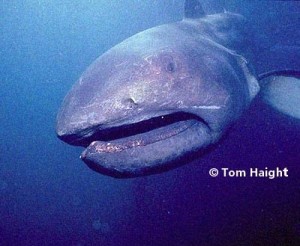Shark Month Profile: The Megamouth Shark
By Matt O'Hern // June 9, 2014
Among the Most Rarely Observed Shark Species
ABOVE VIDEO: The megamouth shark is finally revealing itself 30 years after being discovered. Video courtesy of Discovery Channel.
The megamouth shark is a living reminder of the vast world of unexplored species that lay beneath the ocean’s surface. Discovered in 1976, this shark is one of the most rarely observed species among all sharks. They can reach lengths of 18 feet and weigh up to 2,600 pounds.
Megamouth sharks have not been observed off the coast of Florida but they do live in parts of the Atlantic Ocean, as well as the Indian Ocean and Pacific Ocean.
[RELATED CONTENT: ALIEN SHARK HAULED IN OFF JAPAN COAST]
- Discovered in 1976, by a U.S. Navy research vessel off the coast of Hawaii near Oahu.
- Completely harmless to man.
- There have been fewer than 100 sightings.
- It’s one of three known filter feeding sharks, including the basking shark and the whale shark.
- Can be found in the Indian, Atlantic, and Pacific Oceans.
- According to the Florida Museum of Natural History, “the megamouth is considered to be less active and a poorer swimmer than the basking or whale sharks. Poor mobility likely is a reflection of its flabby body, soft fins, asymmetrical tail, lack of keels and weak calcification.”
- The Megamouth has 50 rows of tiny teeth on each jaw, but only the first three rows are functional.
- Scientists put radio tags on a male Megamouth that was caught in a net in 1990 and tracked it for two days, revealing that the sharks undergo vertical migration. Tom Haight, who swam with the shark and photographed it underwater as the animal was tagged and released, wrote that “From dawn to sunset he swam slowly at 450 to 500 feet into the prevailing current, apparently feeding on krill that were at that depth during the daytime. From sunset to sunrise he ascended to 39 to 46 feet below the surface to feed on the krill as they also ascended. The extreme daylight depth could explain why the megamouth shark is so rarely spotted.”
See more amazing shark facts like these at AmazingSharkFacts.com.












